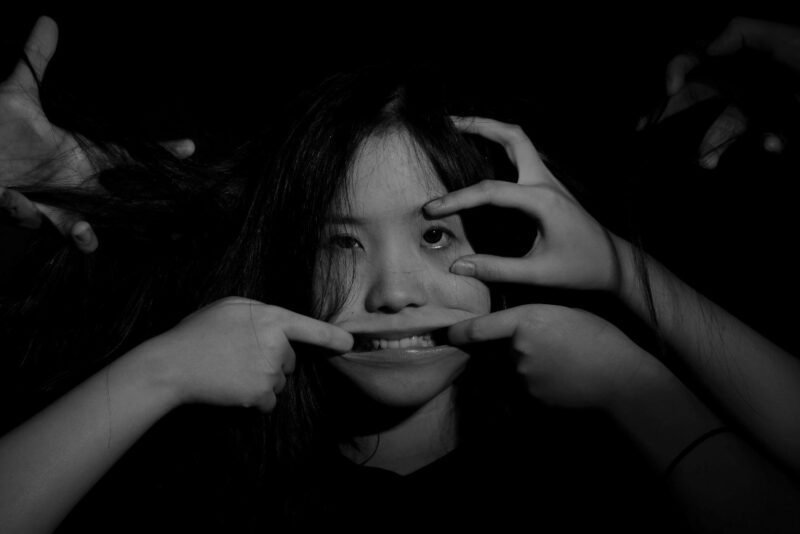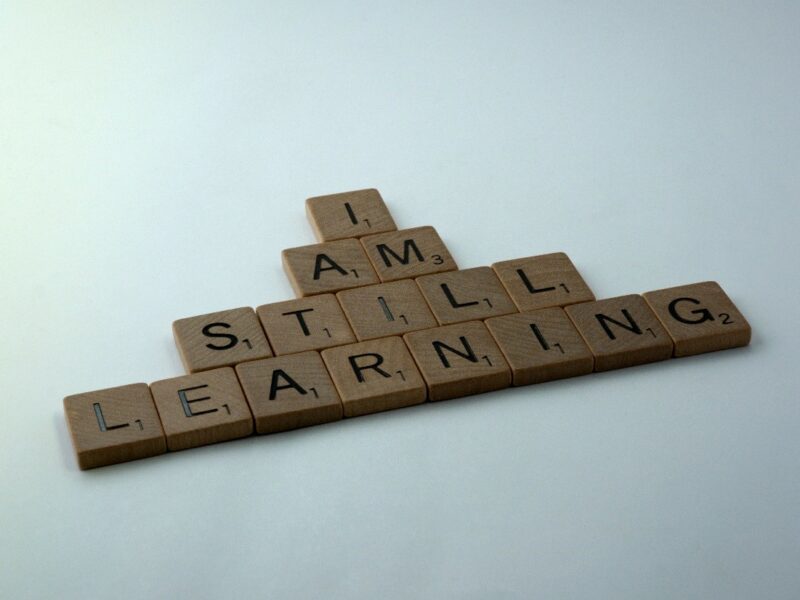
Kill her or become her
Kill her or Become Her
Stereotypes; toxic cultural imprints; Sexism; Internalized Sexism; Hate; Anger; Jealousy; Objectification; Empowerment; Prejudice; Discrimination;
‘’The first problem for all of us, men and women, is not to learn, but to unlearn’’. – Gloria Steinem.

picture by Dainis Graveris from unsplash.com
Open the dictionary and check- up the word stereotype- ‘’a widely held but fixed and oversimplified image or idea of a particular type of person or thing’’ eg. “the stereotype of the woman as the carer” (Oxford Language Dictionary). Following the term’s definition is the example of a woman along with it, which is in itself a common stereotype. To this definition stated above social psychologists would add that stereotypes are a generalized belief or set of beliefs aimed at a particular category of people. This being said, stereotypes can and usually are stated unconsciously, sometimes naively, yet they may in many cases also lead to prejudices and/or discrimination towards that certain group of people.
Stereotypes
So where do stereotypes come from and how are they made, moreover how or rather why do they continue to survive and extend/multiply to new ones. The answer to this is both complex and also simple: unconsciously assimilated imprints from your immediate environment. Whether that environment is from family(home); school (friends and teachers); media (TV and all other social media platforms) and work to name but a few, our unconscious readiness coupled with the faculties of our senses in seeing, hearing and feeling (externally and internally) the world around us. So, social conditioning on one end and socialization in its deepest level.

picture by Nicholas Kusuma from unsplash.com
Socialization
‘’Socialization, the process whereby an individual learns to adjust to a group (or society) and behave in a manner approved by the group (or society). According to most social scientists, socialization essentially represents the whole process of learning throughout the life course and is a central influence on the behaviour, beliefs, and actions of adults as well as of children.’’ Brittanica
As a point of simplification: Our beliefs (attitudes we hold to be true) make up our values (importance/worth of something) also our value system and somewhere within the depths of all our experiences in life as well as those observed from second person perspective as well as third person perceptive are in fact completely unconscious. The matter of unconscious programming is outside the scope of this article but nevertheless had to be mentioned as a valid piece of information into understanding the depth and breadth of stereotypes.

picture by George Pagan from unsplash.com
Imprints and Imprinting
An imprint by definition is ‘’a stamp or outline on a surface’’ and coining that with cultural means a stamp made by ones’ cultural experiences and environment. However once again, as with values and beliefs, cultural imprints are unconscious in their depth and unlike the definition of ‘’imprint’’, in people imprints are deeply embedded in a system of the mind, categorized and assimilated unconsciously yet made concrete and manifested through the domain of language and nonverbal communication ( more on NLP; John Grinder; Richard Bandler).
In the area of women, the biggest stereotype, discrimination and prejudice on basis of sex is Sexism. Sexism is the prejudgment that due to the sex of individual, that person will possess certain (negative) traits furthermore these traits are assumed to disqualify the person for certain vocations and/or prevent them from performing adequately in certain jobs or in some social situations (Spencer A. Rathus et al, 2005).
Sexism- Internalized
Here its important to note that Sexism(its form and spread) although originally arising from men to women, does in fact originate also from women to other women and although expressed verbally/externally does also manifest as ‘’internalized sexism’ as journalist Alia.E.Dastagir says is ‘’no one’s fault but everyone’s problem’(article link below). The woman who is responsible for confronting this unconscious form of sexism is world famous feminist Gloria Steinem, who famously also said ‘’you could not subordinate half the human race unless some of that was internalized’’.
The internalized and unconscious sexism is the core from which stems further labels, stereotypes, values, beliefs and forms of conduct which externally express themselves namely into areas of body image, beauty, empowerment, sexual objectification, diet, clothing, career, relationships (with ourselves and others), motherhood, men. There is always a form or construct we follow as an internal reference as to what is right/wrong; ugly/beautiful; successful/unsuccessful; powerful/weak; mother/bitch; slut/virgin; anorexic/obese; thin and attractive/ fat and unattractive; flashy/humble this or that. Naturally, categorization is the way we learn from a young age we are taught to differentiate between blue/red, alphabet, number etc, the issue is how discreetly the categorizations gain or have gained a value in our mind and the model we choose to copy and use as reference to get what we want, to be a certain way or act/feel certain things. Oddly when we encounter people that fit or match our ‘model of the world’ we hold them highly, like them, love them and likewise the opposite leading to hate, resentment and underlying anger. Whatever we choose to believe or adhere to, the opposite that instils in us certain emotion(s) is the core of learning. At the root of assimilation, beyond just understanding ‘the other side’ but role-modelling its behaviour or analysing from different perceptual positions we can start the dissolution of strong held and destructive stereotypes. We learn to ‘’unlearn’’ and through that ‘relearn’ certain aspects of ourselves and others that have led into stuck representational systems of the world around us.

picture by Brett Jordan from unsplash.com
Gestalt and Assimilation
History has too many examples of what happens when hatred, anger, rage and overt power turns against to killing, dominance and savagery. The title of this article invites readers to accept or challenge the metaphorical statement of ‘kill her or become her’. The ‘her’ is part of the I and that in turn is also part of the whole- her and hers-all women of the world. Gestalt psychologists would argue that ‘the whole is greater than the sum of its parts’ and to that its worth adding the whole of oneself as well as the whole as a community. By killing, we remove or delete the toxic self-sabotage of the inner sexist and by becoming we unlearn/relearn to assimilate ourselves within the stereotypes to pick up resources we may need in certain points of our life. For example, a woman may need to act like a bitch or be a bitch to a man who is trying to ‘hit on her’ and doesn’t understand he is harassing her. Similarly, a blonde woman might want to entertain the stereotype of being dumb to get a point across or use it in her interest. Just as we can learn from the villain in a superhero movie and not become him/her so the same with certain stereotypes and labels.
Being Sexist
There are so many stereotypes around women and yet the most major one falls on basis of sexism. From each stereotype there are smaller and yet smaller chunks we can break apart to come to the source and yet with each step towards the goal there lies a choice. When you have so much to do or accomplish, when you are overwhelmed, angry, scared, fearful, misunderstood, alone- these are just but a fraction of the things women are dealing with, in a day, an hour, a minute and within all those small fragments there are more and more unconscious synchronizations occurring that have the power to take your life through decisions you make or don’t.
‘Your life is the decisions you make, large and small. But do they reveal who you are, or who you are taught to be?’ Alia E. Dastagir, You’re sexist. And so am I.
Some common stereotypes about women:
- Women are bad drivers
- Women always think they can change the men in their lives
- Women are chatter heads, especially when around other fellow women
- Women love shopping (and spending money)
- Women want successful, rich, powerful and/or older men.
- Women don’t like to work
- Women cant do the same work as men
- Women are obsessed with how they look
- Women are fragile and sensitive; tend to cry easily
- Women are bitchy and jealous of other women better than them
- Good looking women aren’t smart and/or are easy
- Women get crazy during that time of the month (PMS)
- Smart women are ugly
- Blondes are dumb
Misconceptions
The above is a very small yet generalized list of some common misconceptions about women from men AND women AND women to themselves (toxic self -dialogue). The goal of listing above is not to make women as victims but rather as acknowledgement of certain cultural imprints that we all have in some way unconsciously accepted because if we hadn’t accepted them, they surely wouldn’t exist.
Female Empowerment NOT Objectification
Lastly a very important point worth noting is that objectification never has been and never will be female empowerment. According to Stanford Encyclopaedia of Philosophy (Feminist Perspectives on Objectification
First published Wed Mar 10, 2010; substantive revision Mon Dec 16, 2019)
‘Objectification is a notion central to feminist theory. It can be roughly defined as the seeing and/or treating a person, usually a woman, as an object. In this entry, the focus is primarily on sexual objectification, objectification occurring in the sexual realm.’
Objectification: What is it?
Martha Nussbaum (1995, 257) has identified seven features that are involved in the idea of treating a person as an object:
- instrumentality: the treatment of a person as a tool for the objectifier’s purposes;
- denial of autonomy: the treatment of a person as lacking in autonomy and self-determination;
- inertness: the treatment of a person as lacking in agency, and perhaps also in activity;
- fungibility: the treatment of a person as interchangeable with other objects;
- violability: the treatment of a person as lacking in boundary-integrity;
- ownership: the treatment of a person as something that is owned by another (can be bought or sold);
- denial of subjectivity: the treatment of a person as something whose experiences and feelings (if any) need not be taken into account.
Rae Langton (2009, 228–229) has added three more features to Nussbaum’s list:
- reduction to body: the treatment of a person as identified with their body, or body parts;
- reduction to appearance: the treatment of a person primarily in terms of how they look, or how they appear to the senses;
- silencing: the treatment of a person as if they are silent, lacking the capacity to speak
Taking into account media, marketing, body image, celebrities etc to name but a few areas, the younger women of today view that earlier ‘manly’ behaviour of exposure and overt sexuality that was seen (and still is at times) the ‘popular, cool dude’ now is applied inversely to women who are empowered, fearless and ‘modern’. If the case were that, this article would be null and void but the amount of low self- esteem, loneliness and shame (name but a few) that usually follows such behaviour(s) would paint a different picture.

picture by Natalie Hua from unsplash.com
The Modern Woman
The modern woman is a woman who is empowered and in power firstly of herself and her actions/words and then to the wider scope. She is a woman who doesn’t identify only as a negatively held stereotypical destructive form of the word ‘female’ and neither does she identify with a chauvinist, aggressive, intolerant destructive form of the word ‘male’. She encompasses both aspects of male and female traits when needed and called for, assimilating with the many experiences within herself of the ‘battles’ she fought and won and thus lacks enemies for she has conquered the main stereotype- that there in fact is a stereotype right there.
References:
- Ackerman, C.E.(2021, April 8). What Is Self-Awareness and Why Is It Important? [+5 Ways to Increase It]. Positive Psychology.
- Dastagir, Alia.E.(2017, March 23). You’re Sexist. And So Am I. USA Today.
- Rosen, Michael. 10 Stereotypes About Women you Probably Believe. World of Female.
- Karbo, Karen( 2019, March 25). How Gloria Steinem became the ‘world’s most famous feminist’. National Geographic.
- Goudreau, Jean(2011, October 24). The 10 Worst Stereotypes About Powerful Women.
- Spencer,A.Rathus.,Jeffrey,S.Nevid.,& Lois Fichner-Rathus(2005). Human Sexuality in a world of diversity. Pearson Education Inc.
Related Posts
The New (WO)MAN
How will you choose to identify; who are you at your core; what are your deeply...



